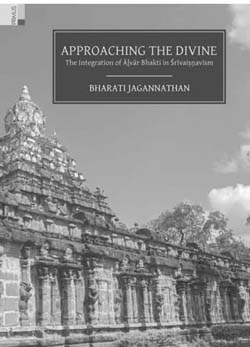In the ‘Introduction’ to The Invention of Tradition [1983], co-edited by Eric Hobsbwam and Terence Ranger. Hobsbawm remarked, ‘“Traditions” which appear or claim to be old are often recent in origin and sometimes invented…. “Invented tradition” is taken to mean a set of practices….which seek to inculcate certain values and norms of behaviour by repetition, which automatically implies continuity with the past.’ Approaching the Divine by Bharati Jagannathan illustrates the case of such an invented tradition of the Srivaisnava community of South India (located in modern Tamil Nadu, southern Andhra Pradesh and Karnataka). Based on a detailed and meticulous study of the source materials comprising the hagiographies, hymns and inscriptions, the book admirably demonstrates the ways in which the Srivaisnava ideologues or the åcåryas between the twelfth and the fifteenth centuries CE reoriented and integrated a pre-existing Tamil religious tradition (from the sixth to the ninth century CE) of the Vaisnava saint singers, the Ålvårs, not only within their worldviews but also within the frame of the Srivaisnava theology of Visistådvaita, thus creating a devotional tradition that remains integral to the community identity till day. The legends of trials and tribulations, catholicity and compassion of the Ålvårs who belonged to diverse social backgrounds and the ideas associated with them that have inspired generations of followers and scholars were primarily evolved by the åcåryas—all of whom were bråhmaμas and came almost three hundred years after the Ålvårs.
The work interrogates crucial questions on bhakti in general and the history of the Srivaisnava community in particular. Chapter one discusses some of these issues: etymology of the term Ålvår, their individual chronology and authorship of the hymns and a comparative analysis with the contemporary religious traditions of Saivism, Jainism and Buddhism. The arguments based on a threadbare analysis of the source materials often question the received history and historiographical wisdom. Two issues in this connection need to be mentioned here. One, the idea of ‘bhakti movement’ that dominates the academic and popular sphere is questioned. It is correctly pointed out that the Ålvårs were individually inspired by their individual devotion to Vishnu, and were not a part of any collective ‘proselytizing campaign’ (p. 14) that defines a ‘movement’. Two, the redaction of the scriptural canon, the Nålåyira Divya Prabandham, i.e. the four thousand songs of the Ålvårs—an area fundamental to the Srivaisnava belief has been scrutinized. Jagannathan points out that the legend of loss and recovery of the hymns at the behest of the åcåryas and the divine intervention ascribed by the tradition to the tenth century were a result of the hagiographical imagination as the inscriptions attest the popularity of the hymns in the temple rituals from an earlier period. This legend we are told, was an attempt by the Bråhmanical åcåryas including the authors of the hagiographies to legitimize their status by incorporating a widespread Tamil tradition. While demonstrating that the Nålåyira Divya Prabandham had emerged as a canon before the twelfth century, the author cogently argues that there could be several hymns which were in circulation but were never included in this corpus. Their omission was probably because they were not a part of the popular oral tradition of hymnal singing, or were erased by memory that carried this tradition, or were left out deliberately in the editorial process of redaction or were unknown to the compilers. Such a path-breaking analysis highlights the complex processes related to the evolution of a scripture, whose existence is often taken for granted.

